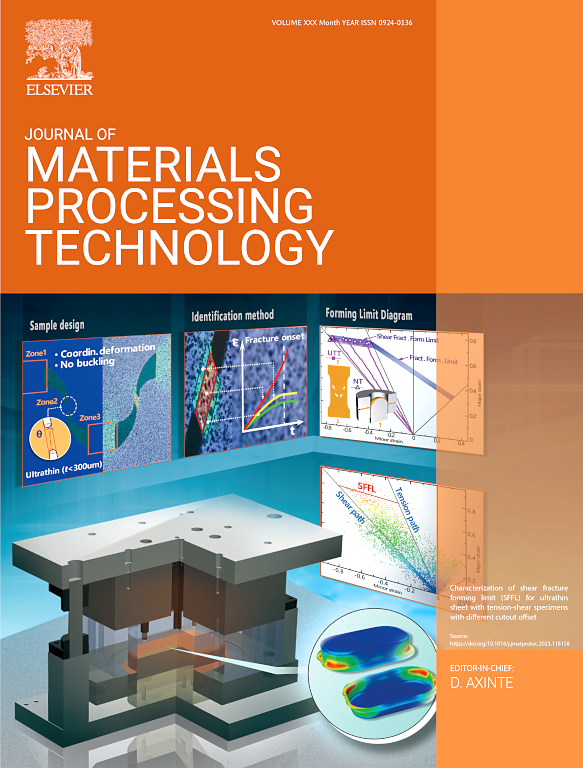Material removal mechanism and surface quality in low-fluence femtosecond laser ablation of polycrystalline diamonds
IF 6.7
2区 材料科学
Q1 ENGINEERING, INDUSTRIAL
Journal of Materials Processing Technology
Pub Date : 2025-01-17
DOI:10.1016/j.jmatprotec.2025.118731
引用次数: 0
Abstract
Polycrystalline diamond (PCD) tools are extensively used in industry due to their ultrahigh hardness. Femtosecond laser ablation (FLA) has emerged as a promising method for precision applications such as the fabrication of micro/nano structures on the ultrahard tool surface. The distinct material removal mechanisms of PCD caused by the synthesized cobalt in polycrystalline structure influences the significance of plasma and plume shielding effects, eventually the machining efficiency and surface finish. To reveal the fundamental principle of how PCD’s microstructure affects material removal process, this paper presents a comprehensive study on the low-fluence FLA of PCD materials with different grain sizes and Co distribution. Evolution of plasma is visualized by the ultrafast imaging technique, and shielding effects are reflected by dynamic luminance of the recombined plasma. Effects of plume shielding at different repetition frequencies and scanning passes are characterized via acoustic emission sensing. A modified two-temperature model is developed to quantify energy absorption and thermal effects at different FLA conditions. It is revealed that microstructure of PCD determines the plasma generated by prior ablation of Co and shielding energy transferred to diamond lattice at different fluences; machining efficiency at different repetition frequencies is predominantly governed by the extent of plume shielding and plasma heating, regardless of the PCDs’ microstructure. This study establishes a direct correlation between laser parameters and shielding effects, and provides theoretical insights for the high-quality, high-efficiency fabrication of small-scale structures on ultrahard materials.
求助全文
约1分钟内获得全文
求助全文
来源期刊

Journal of Materials Processing Technology
工程技术-材料科学:综合
CiteScore
12.60
自引率
4.80%
发文量
403
审稿时长
29 days
期刊介绍:
The Journal of Materials Processing Technology covers the processing techniques used in manufacturing components from metals and other materials. The journal aims to publish full research papers of original, significant and rigorous work and so to contribute to increased production efficiency and improved component performance.
Areas of interest to the journal include:
• Casting, forming and machining
• Additive processing and joining technologies
• The evolution of material properties under the specific conditions met in manufacturing processes
• Surface engineering when it relates specifically to a manufacturing process
• Design and behavior of equipment and tools.
 求助内容:
求助内容: 应助结果提醒方式:
应助结果提醒方式:


